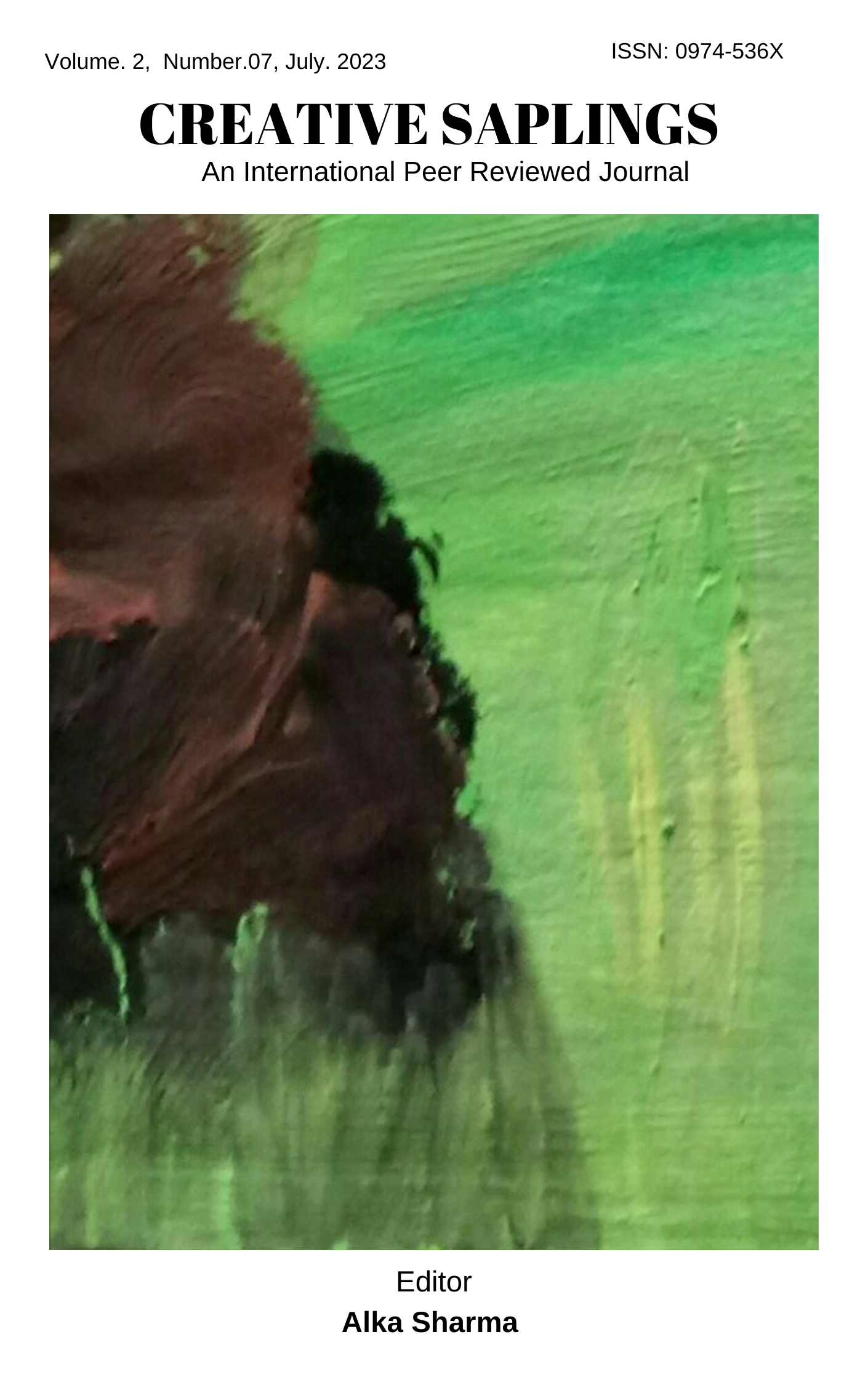Feminist Semiotics of Advertising Media Texts
DOI:
https://doi.org/10.56062/gtrs.2023.2.04.341Keywords:
feminist semiotics, media text, audio - visual media, advertising text, communication, social media.Abstract
Semiotics is emerged a major theoretical and analytical approach in the media-driven era of 21st century. In the history of human evolution, use and analysis of signs to communicate have the utmost importance. Before verbal and written linguistic discourse, the use of signs remains in human communication. Semiotics is thought to be a structural and linguistic approach but as Saussure has asserted that semiotics is broad, inclusive and comprehensive in nature and scope, while linguistics is a part of it. Modern media is scientifically and technologically more enhanced and inclusive of various signs through technological gadgets. McLuhan regards ‘media is message’. Like language in literature, various audio-visual and graphic signs are employed for effective expression in media texts. Language is a ‘sign system’ of human communication which is mainly androcentric and needs to be challenged and explored through a feminist perspective. The idea is to study semiotics in feminist context i.e. to be regarded as ‘feminist semiotics. The emergence of the feministic approach changed perception in every field of life and brought various possible interpretations. As the signs employed in media texts mainly androcentric, the feminist semiotics attempts to expose and deconstruct them. Advertisements especially, consumer ads either in print or in electronic media are published having the notion of ‘art for market’s sake’ or ‘art for profit’s sake’ which need to be considered and analyzed as ‘media text’. In this research article, efforts are made to explore and blend feminist contextual approach with semiotics to analyze advertising texts. There is a multitude of audio-visual and electronic driven gadgets in the present digital world therefore, it needs to be interpreted from feminist semiotic perspective.
Downloads
References
Bignell, Jonathan. Media Semiotics Manchester: Manchester Univ. Press, 1997.
Chauhan, G.S. “Advertising Language” Language in India Vol.6 ‘6 June, 2006’ p.2-9
‘http//www.languageinindia.com’.
Crystal, David. A Dictionary of Linguistics and Phonetics 5th ed. Blackwell Publishing, 1980 Rpt. 2003.
Dole, Jaydev. Samachaar Mumbai: Lokvangamaya Griha, 2006.
Dua, Hans. Hegemony of English Mysore: Yashoda Publications, 1994.
Dubey, Vinod. Newspaper English in India 1st ed New Delhi: Bahri Publications 1989.
Encyclopedia Britannica, vol.1 p.113.
Fairclough, Norman. Language and Globalization 1st ed. USA: Routledge 2006.
Fairclough, Norman. Language and Power USA: Longman Inc., 1989.
Hartley, John. Key Concepts in Communication, Cultural and Media Studies, 3rd ed London:
Routledge 2004.
Hudson, R.A. Sociolinguistics, 2nd ed India: CUP 2003.
Jeffrey, Robin. “Advertising and Indian Language Newspapers: How Capitalism
Kamble, Saroj. Strimukti : Aajache Sandharbha Krantisingh Nana Patil Akadami, 1999.
Kelkar, Ashok. Language in a Semiotic Perspective: The Architecture of a Marathi Sentence
Pune:Shubhada-Saraswat Prakashan1997.
Kress, Gunther, Robert Hodge. Language and Ideology Routledge and Kegan Paul Ltd. 1979.
Leech, Geoffrey. English in Advertising: A Linguistic Study of Advertising in Great
Britain London: Longmans, Green and Co Ltd 1966.
Leech, Geoffrey. A Linguistic Guide to English Poetry, New York: Longman Inc., 1969 Rpt 1994.
Mills, Sara. Feminist Stylistics Moon, Minakshi et al.Gender and Caste Ed. Rao, Anupama New Delhi: Kali for Women,2003.
Pardeshi, Pratima & Saroj Kamble. Jativyavastha va Strimukti, 2nd edn K.N. P. Akadami, 2007.
Ramamoorthy, L. “Language of Globalization: A Case Study of Tamil Ads” Language in India,
Vol.3, ‘3rd March 2003’
Reddy, Venkat. Language, Power and Ideology: A Critical Discourse Analysis of Advetisements Ph.D. Thesis, CIEFL Hyderabad, June 2003.
Saussure, Ferdinand De. Course in General Linguistics, translated by Wade Baskin, London:
Peter Owen Ltd 1960.
Sells, Peter & Sierra Gonzales The Language of Advertising URL: http://www.stanford.edu/class/linguistics34, 2003.
Sonalkar, Vandana & Sharmila Rege. Pitrusatta va Strimukti, 2nd ed. KNP Akadami, 2007.
Tiwari, Sanjay. The ‘Un’ Common Sense of Advertising 1st ed New Delhi: Response Books, 2003.
Trask, R. L. Key Concepts in Language and Linguistics 1st ed. London: Routledge, 2004.
Williamson, Judith. Decoding Ads, Ideology and Meaning in Advertising London: Marian Boyars, 1978, Rpt 2002.
www.bookmybai.com
Downloads
Published
Issue
Section
License
Copyright (c) 2023 Vilas Rupnath Buwa

This work is licensed under a Creative Commons Attribution-NonCommercial 4.0 International License.





